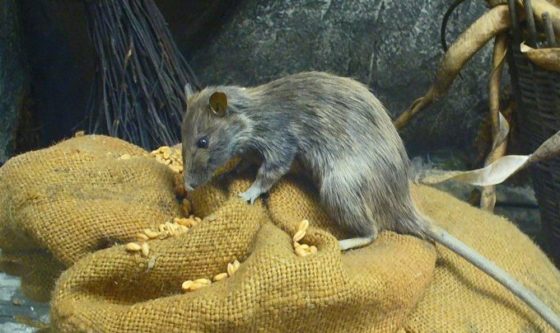This article was originally published by Olivia Cook at Natural News.
New York City’s (NYC) Department of Health and Mental Hygiene has warned about the spread of leptospirosis, or “rat urine disease,” in the city. The department noted in its 2024 Health Advisory #10 that six cases of leptospirosis have already been reported this year – the highest number in a single year.
Recent reports indicate a significant surge in New York City’s rat numbers, now estimated at approximately three million, marking a 50 percent increase over the past decade. The challenging nature of combating this issue was highlighted by Queens-based pest control company MMPC, which warned about the intelligence and adaptability of rats, particularly in large urban environments like NYC where food sources and habitats are abundant.
Moreover, concerns extend beyond human health, as evidenced by reports of pets contracting leptospirosis, underscoring the multifaceted impact of the city’s rat infestation. (Related: Leptospirosis cases on the rise in NYC – symptoms include kidney damage, meningitis, liver failure, and death.)
Rat urine: A life-threatening bacterial illness
Leptospirosis, a zoonotic disease caused by Leptospira bacteria, primarily associated with Norway rats, poses a significant public health threat. The bacteria, excreted in infected animals’ urine, can persist in warm, moist environments, facilitating transmission through direct contact or contaminated food, soil, and water.
According to the health advisory, New York City has witnessed a concerning rise in leptospirosis cases, with 24 reported in 2023 – surpassing any previous yearly total. Comparatively, the average annual cases from 2021 to 2023 stood at 15, with only three cases per year reported between 2001 and 2020.
Demographically, cases predominantly affected middle-aged males and were most frequently reported in The Bronx, followed by Brooklyn, Manhattan, Queens, and Staten Island, respectively. Clinical presentations often involved renal and hepatic failure – with occasional severe pulmonary complications and a notable mortality rate.
The transmission primarily occurs through residential or occupational exposure to rat-infested environments or materials contaminated with rat urine. Person-to-person transmission is rare.
Symptoms range from fever and headache to severe complications, like kidney failure and respiratory distress if left untreated. While Leptospira bacteria are susceptible to environmental factors, like dry heat and freezing temperatures, warmer weather and excessive rain, exacerbated by climate change, may contribute to their persistence in NYC.
Last year’s spike in cases during warmer, wetter months underscored the potential impact of climate variability on leptospirosis transmission. Efforts by the Health Department to inspect and remediate rat-infested areas remain crucial in mitigating the spread of this concerning disease.
Early administration of antibiotics, such as doxycycline and penicillin, has been proven effective in reducing the severity and duration of leptospirosis, according to health experts. The Centers for Disease Control and Prevention (CDC) has recommended starting antibiotic treatment promptly, even before test results confirm the infection, especially if leptospirosis is suspected.
Infectious disease specialist Dr. William Schaffner, a professor of preventive medicine and health policy at Vanderbilt University School of Medicine, emphasized that people are often infected through contact with urine or water contaminated by rodents, rather than direct contact with the animals themselves. This underscored the importance of preventive measures to reduce the risk of infection.
Preventive measures recommended by NYC Health Department
The city’s Health Department offers a set of guidelines aimed at reducing the risk of leptospirosis infection:
-
- Steer clear of areas where rats might have urinated.
-
- Use a solution consisting of one part bleach and 10 parts water to sanitize areas suspected of being frequented by rats.
-
- Wear rubber gloves, particularly if hands have cuts or sores when handling items or parts of the home suspected of being contaminated with rat urine.
-
- Thoroughly cleanse hands with soap and warm water following interactions with suspected rat-infested spaces.
-
- Wear protective footwear when dealing with trash that may have had contact with rats.
-
- Exercise caution around potentially contaminated freshwater, particularly in post-flooding situations, and abstain from swimming or wading in water that could contain rat urine.
Leptospira bacteria thrive in warm, damp environments. The CDC has estimated a global annual incidence of over one million cases. Despite its flu-like symptoms and nonspecific presentation, early detection and treatment are essential, highlighting the importance of public awareness campaigns.
Watch this video about the disease associated with rat exposure being on the rise in New York City.
This video is from the Daily Videos channel on Brighteon.com.










0 Comments